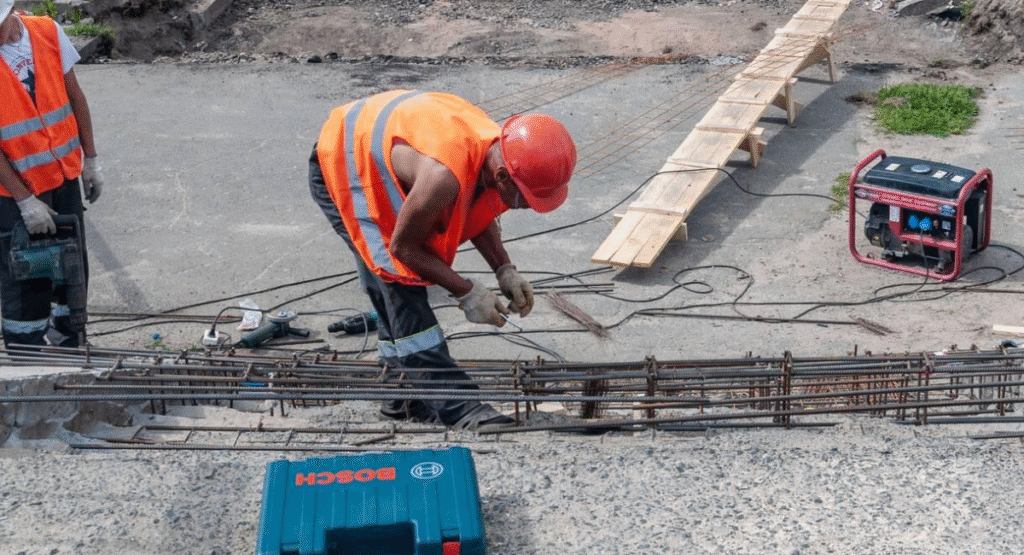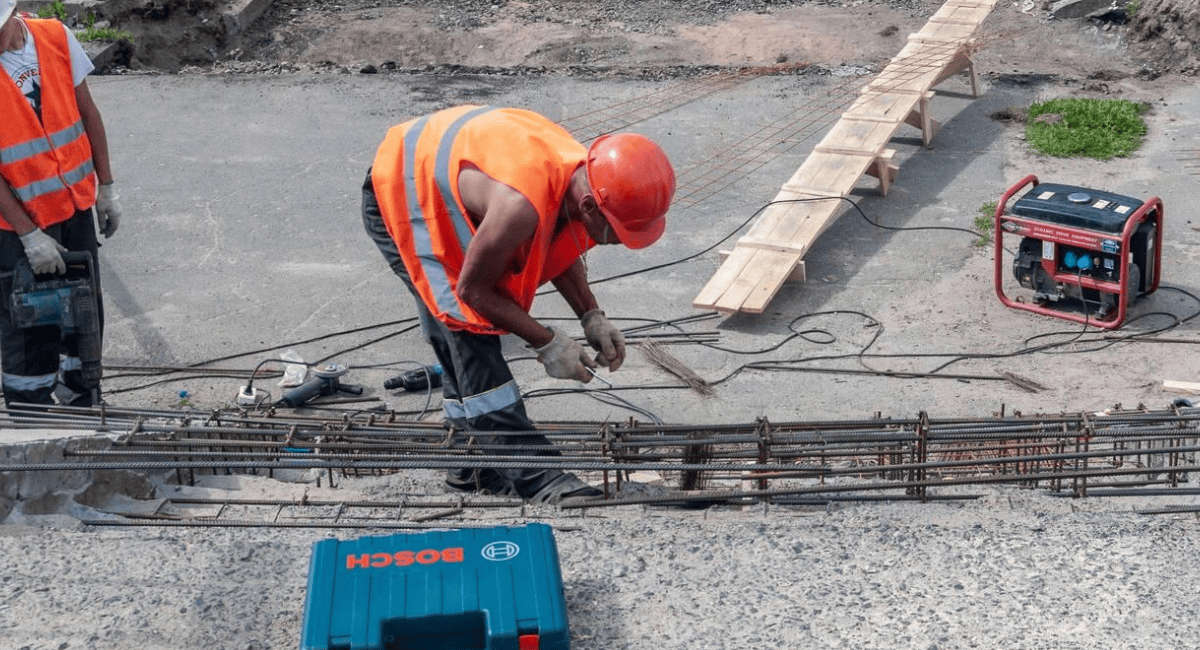Concrete is one of the toughest materials we work with, but even the most durable surfaces don’t last forever. Here in Lansing, Michigan, we see firsthand how our harsh winters, fluctuating temperatures, and seasonal freeze-thaw cycles take a toll on driveways, patios, sidewalks, and foundations. Knowing when to call for professional concrete repair can save you thousands of dollars and prevent minor issues from turning into major headaches.
Understanding Lansing’s Impact on Concrete
Living in Lansing means dealing with extreme weather conditions that put concrete under constant stress. Our winters regularly drop below freezing, and spring brings rapid temperature swings that cause concrete to expand and contract repeatedly. When water seeps into small cracks and freezes, it expands by nearly 9%, creating pressure that widens those cracks even further.

We’ve worked on hundreds of properties throughout Lansing, East Lansing, and surrounding areas, and we’ve seen how quickly minor damage can escalate. The combination of road salt, moisture, and temperature changes creates the perfect storm for concrete deterioration. That’s why recognizing the early warning signs is so important for homeowners and business owners alike.
Visible Cracks: Your First Warning Sign
Cracks are the most obvious indicator that your concrete needs attention. We tell our customers that not all cracks are created equal—hairline cracks might be cosmetic, but anything wider than a quarter-inch requires professional evaluation. If you can fit a credit card into the crack, it’s time to call us for an inspection.
We’ve seen cracks start small on concrete driveways and quickly spread across entire sections within a single season. Vertical cracks, horizontal cracks, and spider-web patterns all tell different stories about what’s happening beneath the surface. The key is addressing them before water infiltration leads to soil erosion and structural instability.
Surface Spalling and Scaling
When the surface of your concrete starts flaking, chipping, or peeling away, we call this spalling. It’s particularly common on concrete patios and driveways that weren’t properly sealed or have been exposed to deicing chemicals. You’ll notice the top layer breaking off in small pieces, exposing the aggregate underneath.
Scaling is similar but typically appears as a powdery or scaly surface texture. Both conditions indicate that the concrete’s protective layer has been compromised. We see this frequently around the Lansing area, especially on surfaces that face direct sun exposure or heavy traffic.
Uneven or Sunken Concrete Sections
When sections of your concrete sidewalk or driveway start settling unevenly, it creates trip hazards and drainage problems. This sinking happens when the soil beneath the concrete erodes, compacts, or shifts due to water infiltration or poor initial compaction. Even a difference of just an inch or two can cause significant safety concerns.
We frequently address this issue throughout our service areas in the Greater Lansing region. Uneven concrete not only looks bad but can also lead to water pooling in unwanted areas. This standing water then accelerates further damage through those freeze-thaw cycles we mentioned earlier.
Pooling Water and Drainage Issues
Proper drainage is critical for concrete longevity. If you notice water pooling on your concrete surfaces after rain or snow melts, it’s a red flag that something isn’t right. Concrete should naturally shed water away from structures, not collect it in puddles.
We’ve learned from years of experience that standing water is concrete’s worst enemy. It seeps into porous areas, finds its way into tiny cracks, and when temperatures drop, that water becomes ice that expands and causes damage. If your driveway or patio has drainage problems, we need to address them before they lead to more extensive repairs.
Crumbling Edges and Corners
The edges and corners of concrete slabs are the most vulnerable points because they have less support than the center sections. When you see these areas starting to break apart or crumble, it indicates that the concrete has weakened and lost its structural integrity. This is especially common on older installations that didn’t include proper edge support.
We work on many properties near Michigan State University and throughout the Lansing area where concrete edges have deteriorated over time. Sometimes concrete resurfacing can restore these areas, but severely damaged edges may require complete replacement to ensure long-term stability.
Foundation Concerns
Your concrete foundation is literally what holds up your home or business, so any signs of damage here deserve immediate attention. Look for horizontal or stair-step cracks, bowing walls, or separation between the foundation and the structure above it. These are serious warning signs that shouldn’t be ignored.
We’ve seen foundation issues throughout Lansing that started small and became exponentially more expensive to fix. Water infiltration, soil pressure, and freeze-thaw cycles all contribute to foundation problems. According to the American Society of Home Inspectors, foundation repairs can cost anywhere from a few thousand to tens of thousands of dollars, making early detection crucial.
Discoloration and Staining
While not always a structural concern, significant discoloration can indicate underlying problems. Rust stains often mean that the rebar or wire mesh inside the concrete is corroding. Dark patches might suggest moisture penetration. White, powdery deposits called efflorescence occur when water moves through the concrete and brings salts to the surface.
We help our Lansing customers understand that aesthetics and structural integrity often go hand in hand. What looks like a simple stain might actually be telling you that water is moving through your concrete in ways it shouldn’t be.
Age and Normal Wear
Even perfectly installed concrete has a lifespan. Most residential concrete lasts 25-50 years, depending on maintenance, weather exposure, and usage. If your concrete surfaces are approaching this age range, it’s wise to have them professionally evaluated even if you don’t see obvious damage.
We work with many homeowners in established Lansing neighborhoods like Old Town, Moores Park, and Colonial Village where homes have original concrete from decades ago. Sometimes the most cost-effective approach is proactive replacement rather than repeated repairs on aging concrete.
When DIY Isn’t Enough
We appreciate homeowners who want to maintain their properties, but concrete repair requires specialized knowledge and equipment. While you might seal small cracks yourself, issues involving settlement, structural damage, or extensive cracking need professional assessment. We’ve seen many DIY attempts that actually made problems worse or simply covered them up temporarily.
The Portland Cement Association provides excellent resources about proper concrete maintenance, but nothing replaces hands-on experience. Our team has worked on everything from stamped concrete to commercial concrete projects throughout the region.
Taking Action
If you’ve noticed any of these warning signs on your property, don’t wait for the next winter freeze to make things worse. We offer free consultations where we’ll evaluate your concrete, explain what’s happening, and provide honest recommendations about repair versus replacement options.
You can learn more about us and our commitment to quality workmanship, or check out our FAQs for answers to common questions. When you’re ready to discuss your project, contact us to schedule your free assessment.
We’re proud to serve Lansing and surrounding communities with reliable, professional concrete services. Your concrete surfaces are an investment in your property, and we’re here to help you protect that investment for years to come.
